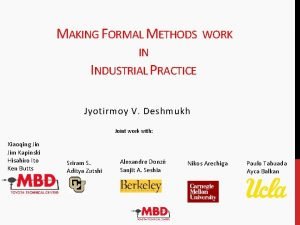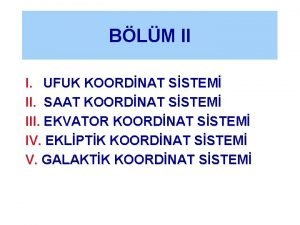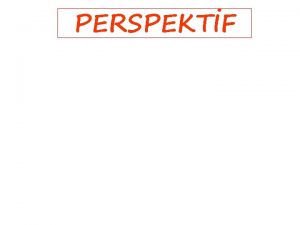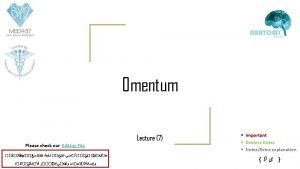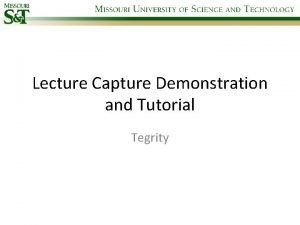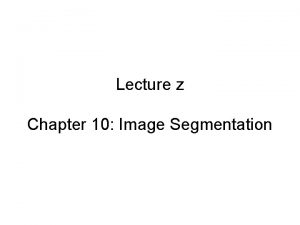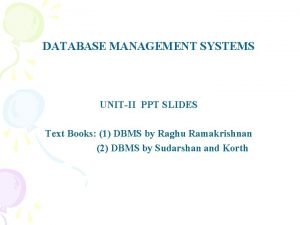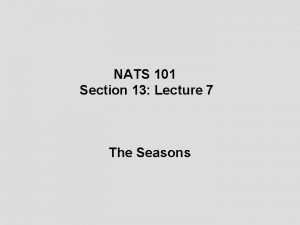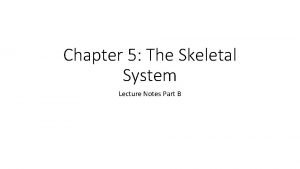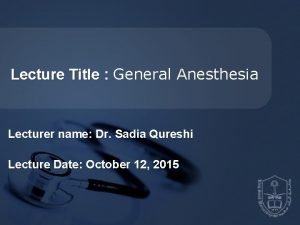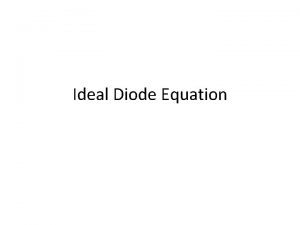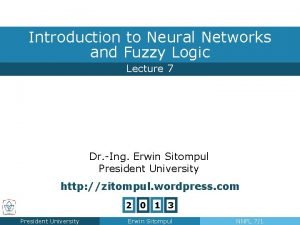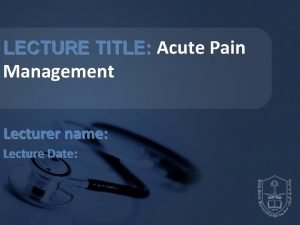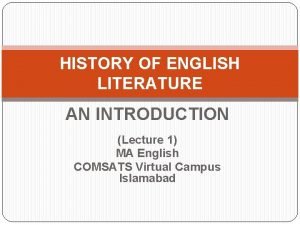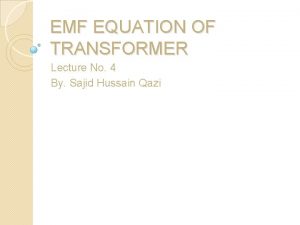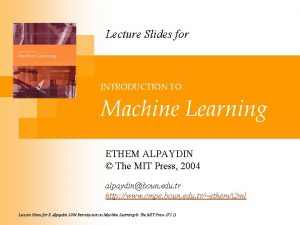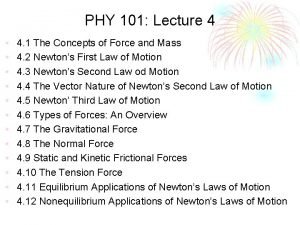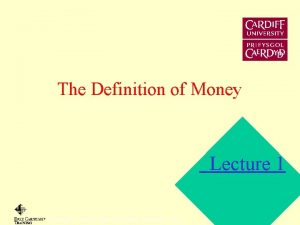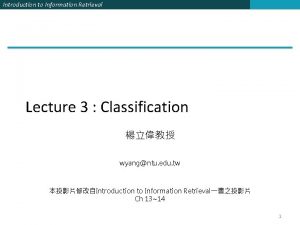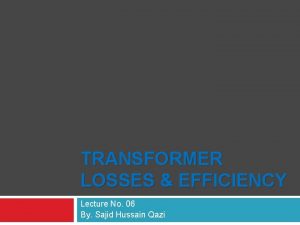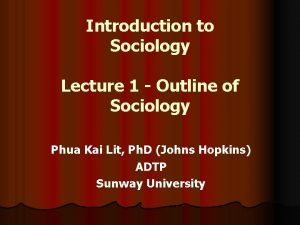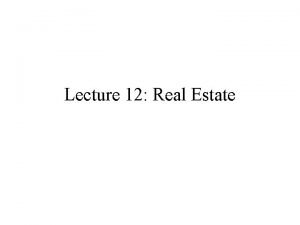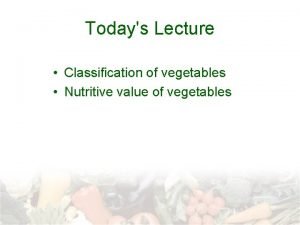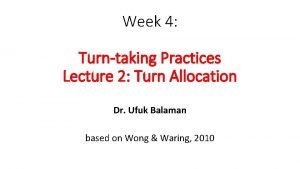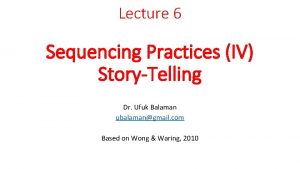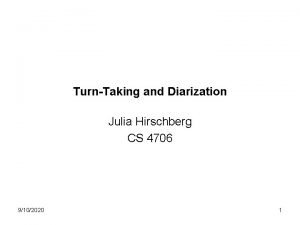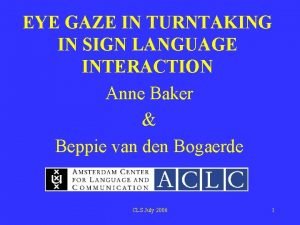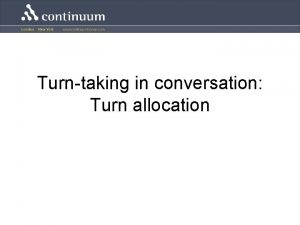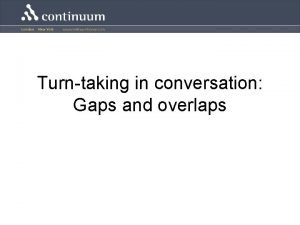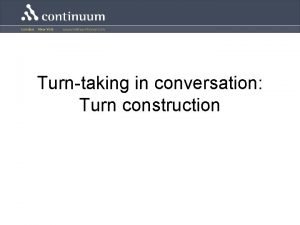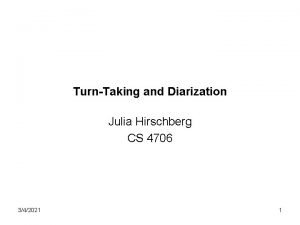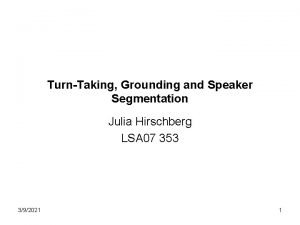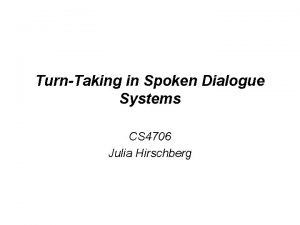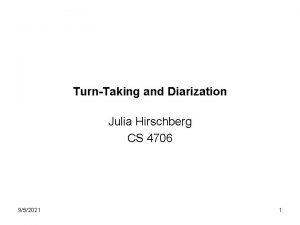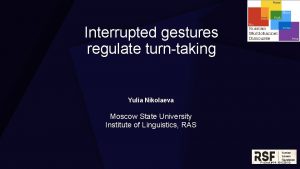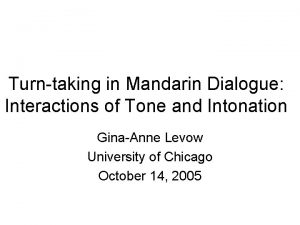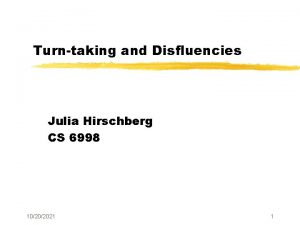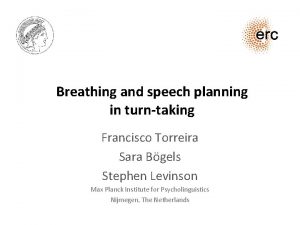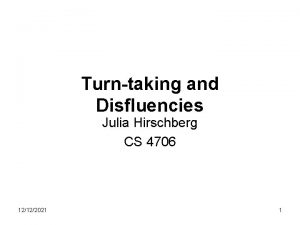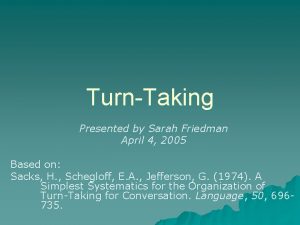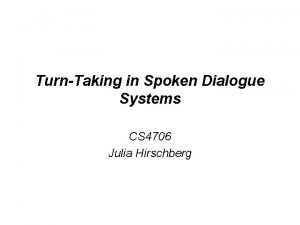Week 3 Turntaking Practices Lecture 1 Dr Ufuk






































- Slides: 38

Week 3: Turn-taking Practices Lecture 1 Dr. Ufuk Balaman based on Wong & Waring, 2010

• How do we figure out when to begin talking and when to stop? • Do we announce each time we are about to start and stop, for example, saying, “It’s my turn now, ” or “I’m finished, and it’s your turn”? • Do we speak in the order of our height, weight, age, or time of arrival into the conversation? • Why don’t we all talk at the same time and crash into each other all the time? • How come there usually isn’t a long gap of silence between one turn and another? • invisible traffic system • unveiling this system is the purpose • TURN-TAKING

What is a turn? • A turn is the basic unit of conversation. • The process of interactants’ production of contributions to talk-in-interaction

• Turn-taking practices refer to way of constructing a turn and allocating a turn. • Without turns, there is no interaction. • Turn-taking in English features one party [speaking] at a time and the minimization of gaps and silences (Sacks et. al. , 1974)

Main Constructs of Turn-taking • Turn-constructional unit (TCU) • Transition relevance place (TRP) • Turn allocation (next week)

TASK 1 • List three ways in which you know when someone’s turn is coming to an end and it is your turn to talk.

Turn Constructional Unit (TCU) • Turn-constructional unit (TCU) is a word, a phrase, a clause, or a sentence that completes a communicative act.

Transition Relevance Place (TRP) • TRP is a possible completion point that makes speaker transition relevant. • Projectability is an essential feature of the turn-constructional unit that allows the recipient to calculate its possible ending. • In order to take a turn, one has to know when others are about to stop talking. • Without the ability to project TCU completion, one runs the risk of interrupting others or not getting a word in edgewise.

• Knowing how to project completion allows the partner to place response tokens such as uh huh, mm hmm, yeah • The question is: on what bases are we projecting the possible completion of a TCU? • (1) grammar; • (2) intonation; • (3) pragmatics.

• An utterance is grammatically complete if it could be interpreted as a complete clause in its discourse context. (word, phrase, clause) • Intonation completion refers to a point at which a rising or falling intonation can be clearly heard as a final intonation. • An utterance is pragmatically complete when it can be heard as a complete conversational action within its discourse context.


• • • In real time, what one hears is successively: (1) I (2) I wanted (3) I wanted to know (4) I wanted to know if . . . (5) I wanted to know if you got a. . . parking place (6) I wanted to know if you got a. . . parking place this (7) I wanted to know if you got a. . . parking place this morning. As we can see, (1) projects a verb phrase (e. g. , “I what? ”), (2) projects either a noun phrase (e. g. , “wanted what? ”) or a verb complement (e. g. , “wanted to what? ”), (3) projects a verb object (e. g. , “know what? ”), and (4) projects a clause (e. g. , “if what? ”). We use, first and foremost, our knowledge of grammar in making these projections.

Multi-unit Turn • Multi-unit turn is a conversational turn that consists of more than one TCU. • How to deal with the difficulty of holding a turn long enough to finish what they are saying? • TCU-initial practices • TCU-middle practices • TCU-end practices

TCU-initial practices • (1) list initiating marker; • (2) story preface; • (3) pre-pre (preliminaries to preliminaries); • (4) big inbreath.

List initiating marker • Specify from the outset with a list initiating marker that the current TCU is only the first in a series (Schegloff, 1982, p. 75)

Story preface • Story preface is a device by which a prospective teller displays an inten- tion to tell a story and secures a multi-unit turn within which the actual story may be told. • Some examples of story prefaces are (Sacks, 1992 b, pp. 227– 228): • You want to hear a joke? • Something really wonderful happened today. • I have something terrible to tell you.

Pre-pre (preliminaries to preliminaries) • Pre-pre (preliminaries to preliminaries) is a device by which one announces an upcoming action without producing that action immediately afterwards. • Pre-pre usually takes the format of Can I X? , Let me X, or the like (Schegloff, 2007, p. 44): • • Can I ask you a question? Can I tell you something? Can I make a suggestion? Can I ask a favor?


Big inbreath • When someone takes an inbreath, you get the sense that s/he is about to take a turn, and if s/he takes a big inbreath, you know that this is going to be a long turn. • A big inbreath is another device for projecting a multi-unit turn. • It is a way of signaling that what you have to say simply cannot be confined to a single TCU.

TCU-middle practices • The middle of a TCU is also a place to mark the in -progress TCU as a prelude to subsequent ones: • (1) prospective indexicals; • (2) marked first verbs; • (3) contrastive stresses or structures.

Prospective Indexicals • Prospective indexical is an item whose referent or interpretation is to be discovered in subsequent TCUs. • prospective indexical “that” (points forward)

Marked First Verbs • Marked first verb is the verb or set of words that functions to project multi -unit turns by implying that a second verb or set of words is in the works. • • wanted to was/were going to was/were supposed to thought/was thinking tried/was trying could have should have


• Marked first verbs display the following characteristics (Schulze. Wenck, 2005, p. 325): • (1) they express intention, plan, expectation, attempt, possibility, or obligation; • (2) theyhavepast-timereference; • (3) they are followed by a complement that describes what was intended/ • planned/expected/attempted/possible/advisable; • (4) theyimplythefailureofthiseventoraction.

Contrastive Stresses or Structures

TCU-END PRACTICES • Participants also use at least two ways to project a multi-unit turn near the end of a TCU: • (1) pitch-drop withholding; • (2) rush-through.

Pitch-drop Withholding • To forestall the hearing of a TCU as complete, one can withhold the pitch drop at the end of the TCU and move directly into the next:

Rush-through • Rush-through is a turn-extension practice where one speeds up as s/he approaches a possible completion point, speeding through the juncture without any pitch drop or breath intake, and stopping at a point of “maximal grammatical control” (well) into the next TCU.

CONVERSATION WORKSHOP II

Brainstorm about what happens after one party uses the following utterances in a turn. • You want to hear a joke? • Something really wonderful happened today. • I have something terrible to tell you. • Can I ask you a question? • Can I tell you something? • Can I make a suggestion? • Can I ask a favor?

• You want to hear a joke?

• Something really wonderful happened today.

• I have something terrible to tell you.

• Can I ask you a question?

• Can I tell you something?

• Can I make a suggestion?

• Can I ask a favor?

Second Round • Take turns in an alphabetical order! • Complete a story by analyzing the relevancy of the previous turn.
 Ufuk topcu
Ufuk topcu Ufuk koordinat sistemi
Ufuk koordinat sistemi Genilik
Genilik Derya ufuk altıntaş instagram
Derya ufuk altıntaş instagram 01:640:244 lecture notes - lecture 15: plat, idah, farad
01:640:244 lecture notes - lecture 15: plat, idah, farad Week by week plans for documenting children's development
Week by week plans for documenting children's development Lesser omentum
Lesser omentum The lecture from prehistory
The lecture from prehistory Sensitivity analysis lecture notes
Sensitivity analysis lecture notes Tegrity lecture capture
Tegrity lecture capture Dam construction in digital image processing
Dam construction in digital image processing Er diagram ppt
Er diagram ppt Bayesian classification in data mining lecture notes
Bayesian classification in data mining lecture notes Importance of seasons
Importance of seasons Physics 101 lecture 1
Physics 101 lecture 1 Hyoid bone lecture
Hyoid bone lecture Lecture title
Lecture title The ideal diode equation
The ideal diode equation Logic sitompul
Logic sitompul Www.imran lecture.com
Www.imran lecture.com Randy pausch last lecture summary
Randy pausch last lecture summary Lecture title
Lecture title Slagle lecture
Slagle lecture Corneal reflex
Corneal reflex Wave notes pdf
Wave notes pdf English literature lecture
English literature lecture Computer security 161 cryptocurrency lecture
Computer security 161 cryptocurrency lecture The average emf per turn in a transformer is
The average emf per turn in a transformer is Ethem alpaydin
Ethem alpaydin Phy101 lecture 2
Phy101 lecture 2 Lecture about money
Lecture about money Svm lecture
Svm lecture Transformer lecture
Transformer lecture Outline of sociology
Outline of sociology Real estate lecture
Real estate lecture Streak plate
Streak plate Lecture vegetable
Lecture vegetable Psaume 23 comme lecture sainte cène
Psaume 23 comme lecture sainte cène Lymphatic system function
Lymphatic system function
